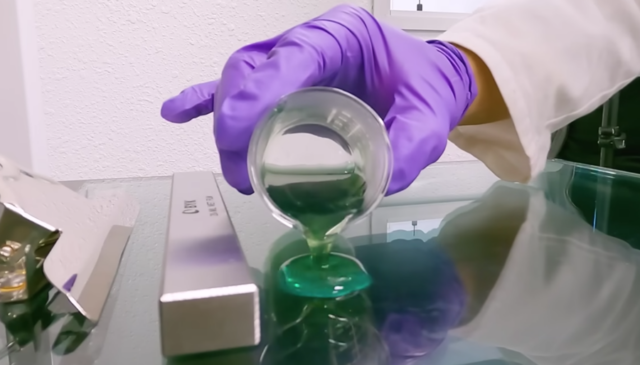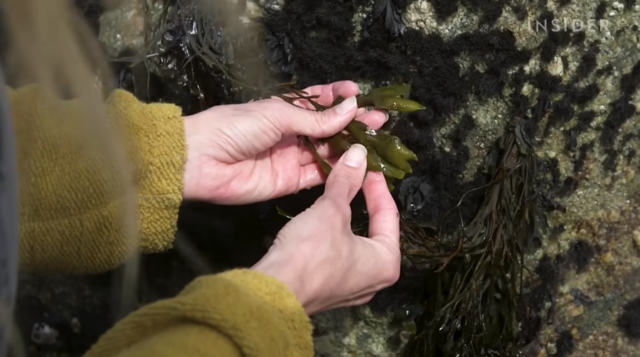Designer Julia Marsh was frustrated with working on packaging projects that would contribute to the plastic pollution in our oceans. Influenced by her childhood at the beach, she founded Sway, a team of material engineers, supply chain enthusiasts, product designers, and environmentalists who are researching how to transform seaweed into a compostable bioplastic.
They are specifically inventing a replacement for hard-to-recycle thin films—polybags and wrappers that “make up nearly half of the plastic going into the ocean every year.”

Like many of the seaweed-based bioplastic startups that are trying to disrupt the industry, Sway wants to make it easy and attractive for plastic-polluting corporations to choose a sustainable alternative. Their product is designed for use with today’s packaging machines and can be heat-sealed to protect consumer goods.
Sway’s plastic alternative can also compost in just a few months, sourced from a white powder that comes from inside the algaes’ cells. In the Business Insider Worldwide Waste video above, Marsh explains:
“Seaweed comes in all sorts of colors, like an entire rainbow. And usually, the browns are the ones that carry alginate, and the reds are the ones that carry agar…
“This is really simplified, but that slime can be dried and powdered and re-jellified, and that’s how you create gels.”

Sea kelp and macroalgae are keystone species that capture carbon, and provide shelter and food for sea life. Mindful of these marine ecosystems, Sway partners with regenerative seaweed farms that “can uplift coastal populations harmed by the climate crisis.” From Forbes:
“These farms grow seaweed in spots of the ocean, in places like Chile, Mexico, Colombia, Brazil, and the East Coast and Alaska in the United States. And harvesting the seaweed is like giving the plants a haircut, not pulling them out by the roots, Marsh notes. Sway is working with responsible ocean seaweed farms that adhere to Aquaculture Stewardship Council-Marine Stewardship Council standards.”

Follow Sway on Instagram and at SwayTheFuture.com.
Then make your own bioplastic, and watch these excellent related videos on TKSST:
• MarinaTex, a bioplastic made from fish waste
• The Ooho edible water bottle, a V&A Object in Focus
• Sixteen year old Elif Bilgin turned banana peels into a bioplastic
• Preserving the Forest of the Sea
• Mycelium packaging, a biodegradable alternative to styrofoam
Plus, don’t miss The power of seaweed: How can kelp help capture carbon?
Curated, kid-friendly, independently-published. Support this mission by becoming a sustaining member today.


